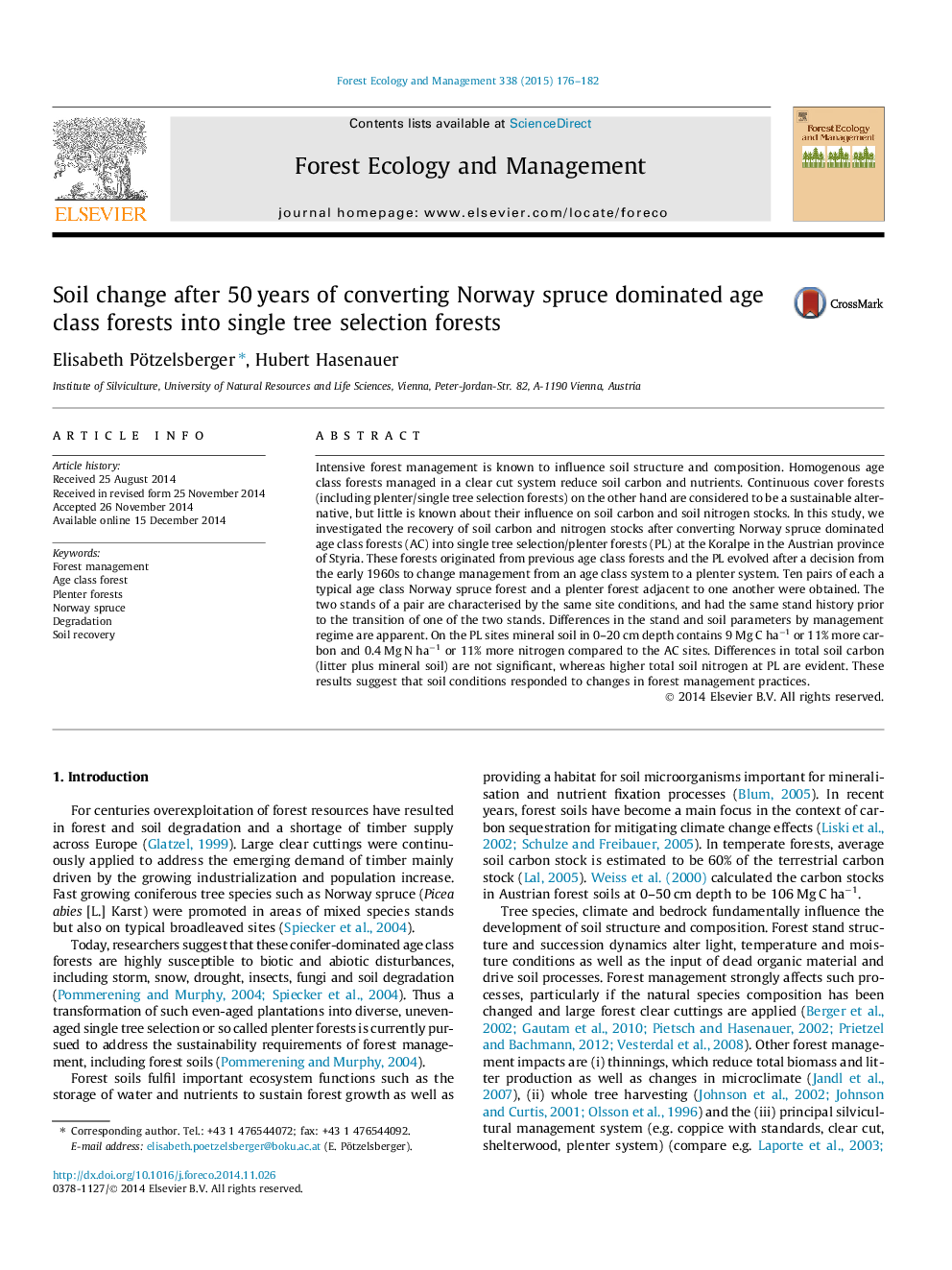| Article ID | Journal | Published Year | Pages | File Type |
|---|---|---|---|---|
| 86390 | Forest Ecology and Management | 2015 | 7 Pages |
•Converting Norway spruce age class (AC) forest to single tree selection forest (PL).•Recovery of soil C and N stocks after 50 years.•Mineral soil in 0–20 cm depth with +11% C and N at PL compared to AC.•Positive effect of continuous forest cover.•Changes in forest management practices can ameliorate degraded soils.
Intensive forest management is known to influence soil structure and composition. Homogenous age class forests managed in a clear cut system reduce soil carbon and nutrients. Continuous cover forests (including plenter/single tree selection forests) on the other hand are considered to be a sustainable alternative, but little is known about their influence on soil carbon and soil nitrogen stocks. In this study, we investigated the recovery of soil carbon and nitrogen stocks after converting Norway spruce dominated age class forests (AC) into single tree selection/plenter forests (PL) at the Koralpe in the Austrian province of Styria. These forests originated from previous age class forests and the PL evolved after a decision from the early 1960s to change management from an age class system to a plenter system. Ten pairs of each a typical age class Norway spruce forest and a plenter forest adjacent to one another were obtained. The two stands of a pair are characterised by the same site conditions, and had the same stand history prior to the transition of one of the two stands. Differences in the stand and soil parameters by management regime are apparent. On the PL sites mineral soil in 0–20 cm depth contains 9 Mg C ha−1 or 11% more carbon and 0.4 Mg N ha−1 or 11% more nitrogen compared to the AC sites. Differences in total soil carbon (litter plus mineral soil) are not significant, whereas higher total soil nitrogen at PL are evident. These results suggest that soil conditions responded to changes in forest management practices.
